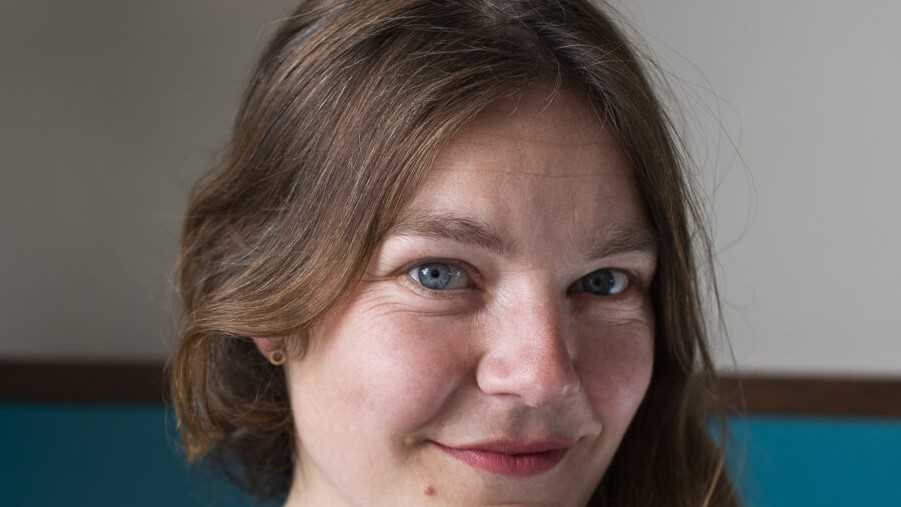MILAN – Nora Šmahelová, Coffee Education leader at Accademia del Caffè Espresso, has had a long professional career in the industry, which has taken her from Berlin to this place in the green countryside outside Florence, to deal with training and education. A big leap, no doubt, but one that she has taken courageously, and fortunately so, because the results of two years of sowing are already bearing fruit – as much as, it is appropriate to say in this context, the flowers in the greenhouse.
Šmahelová, a graduate in product design in Berlin, an artist and ceramist by passion: how did you become a barista?
“Well, I see my personal development in the coffee business as a sequence of many coincidences and opportunities which were mostly a consequence of my natural openness and curiosity about new things.
My first contact with coffee was when I started to work as a barista in a coffee shop back in 1999, still going to school and having the objective to earn some money to finance my hobbies and free-time activities.
Obviously, I didn’t start this job specifically for coffee, honestly, I liked the place and the atmosphere, I didn’t have any idea about coffee at all.
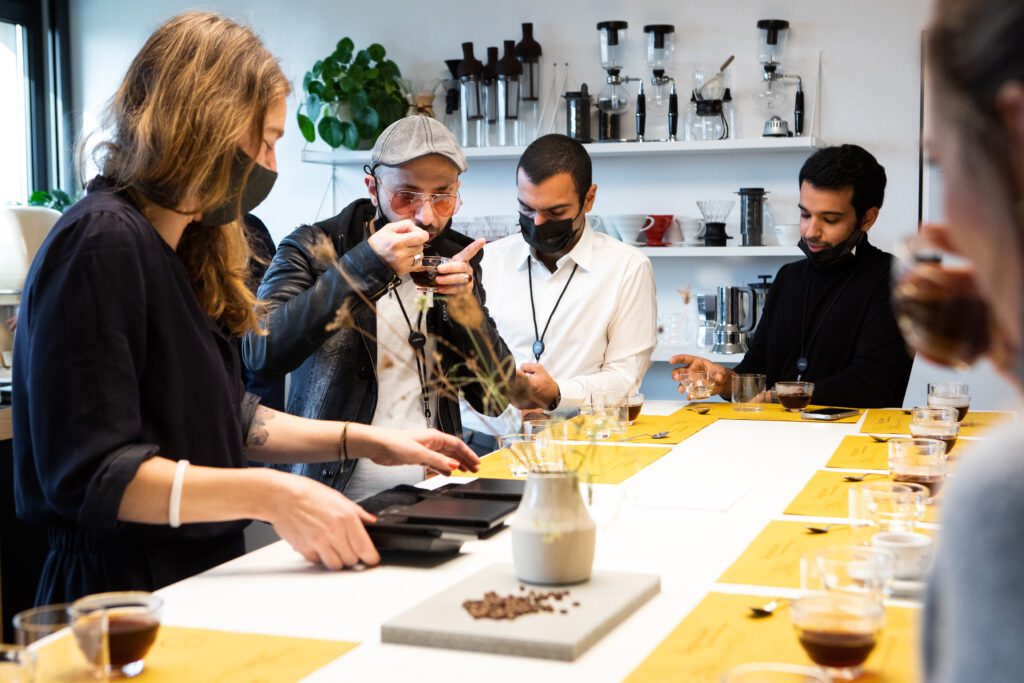
Coming from a culture with a huge tradition of coffeehouses but not related to espresso preparation, for me coffee was primarily a socialization tool rather than a craft of preparation. I liked coffee because of the social aspect.”
And what brought you to Accademia Del Caffè Espresso?
“It has been a colorful coffee adventure, basically, I was always following two paths: the creative one like art and design and the same time coffee. A relevant step I consider to be a fundamental part my journey into coffee is the first job I got as a barista, where I learned, from behind the bar, what it meant to be exposed to customers, getting a better understanding about customer service while operating an espresso machine.
Learning things in a high-volume shop means learning under high pressure yet having the chance to absorb lots of information on efficiency and workflow. Next important step was my participation in barista competitions, as a result of a bet which I had with my friends.
I hadn’t just won the bet; at same time I had also become the German Barista Champion 2002, which opened the doors for me towards the international coffee scene, new horizons and a huge pool of new possibilities.
I was always looking for more information and for personal improvement within the coffee business. Basically, this mindset brought me to do some new experiences such as running my own coffeeshop, which I designed from scratch with a friend, working as a barista for different companies like Hario, Eversys, and La Marzocco, exploring the green coffee business as a green coffee sales person.
Long story short, one day I was invited to Accademia Del Caffè Espresso, back in the days when the space was still half empty and I was fascinated by the beauty of the building, the idea that all machines were made by hand here and I am still remembering my fascination about the sunlight, here in Tuscany there is a very special color of sunlight.
I was here and I was thinking that this would be the place where I would like to work one day. It might sound cheesy, but I felt really good here and just wanted to come back.”
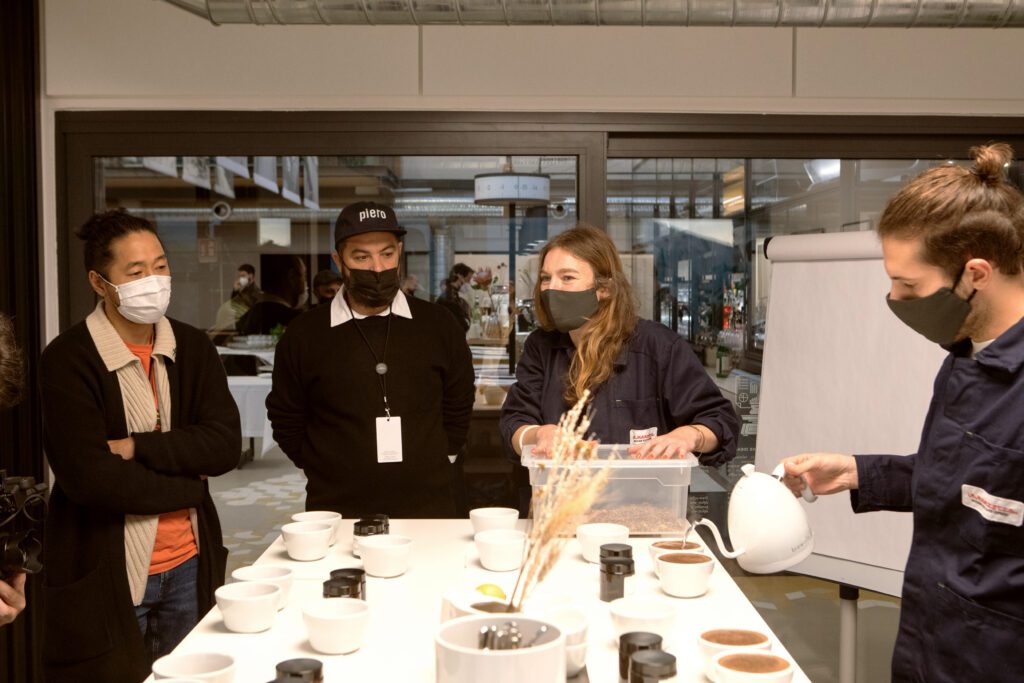
At Accademia Del Caffè Espresso there is a ceramic laboratory specializing in making cups. It almost seems as if it was made for you, a lover of ovens, pottery wheel and so on. Can you explain how this part works?
“Yes, there is a laboratory for ceramics here in Accademia. The beauty of the ceramic materials is that it is a very old craft that allows to create very individual objects. For me, it was kind of obvious to start with espresso cups, as we are at Accademia Del Caffè Espresso and espresso is our main protagonist.
At the same time it is a possibility to close the circle of the story of coffee, from seed to cup. Sharing the knowledge of where a specific coffee comes from, how it was roasted, extracted on a La Marzocco machine, and serving it in a handmade cup. In this way, any visitor here at Accademia can see and experience each of the steps which coffee takes from the origin until the final beverage.
We started to sell two versions of cups here at Accademia which will be also available soon in our online shop. In addition, the ceramic laboratory allows us to serve customer requests and I can elaborate custom orders for them, unique handmade pieces.”
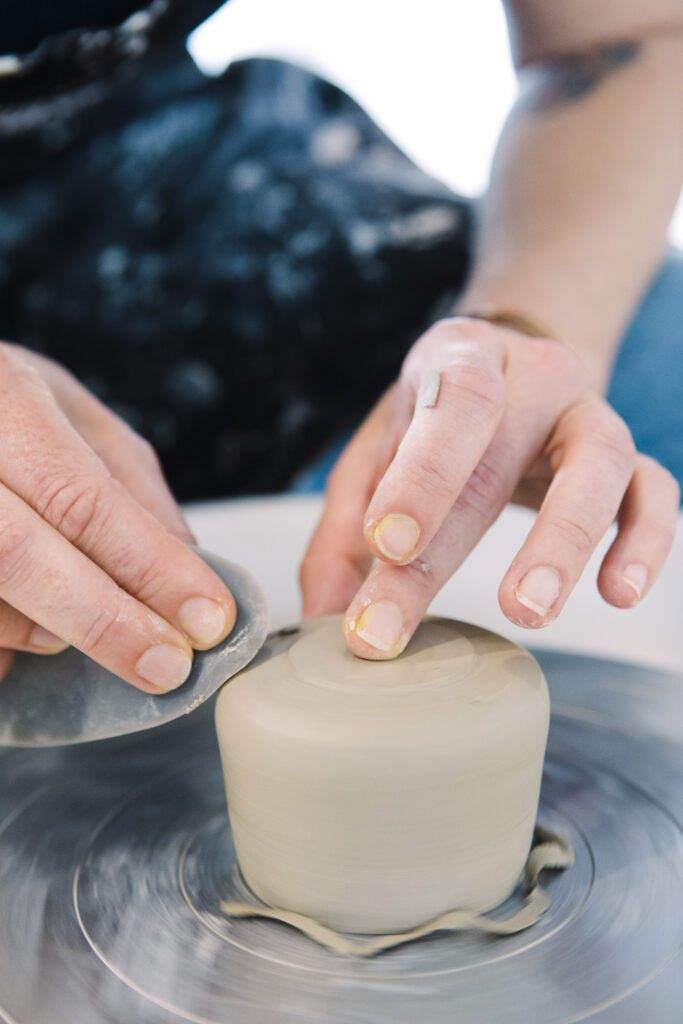
Why don’t Accademia cups have handles?
“For me, being the person who’s taking care of the studio, it’s a matter of aesthetics: Interestingly, if you look around the market or if you go to specialized coffee places, they often serve espresso in a different looking cup.
Often different in shape and color, often also in connection with the origin of coffee. Very often it’s without a handle to underline that the coffee is going to be different in taste and you already have that visual and haptic indication from the shape of the cup, to hint that you will experience something worth triggering your curiosity.
You can hold it in a different way, feel the temperature with a peculiar sensation while you taste the beverage.”
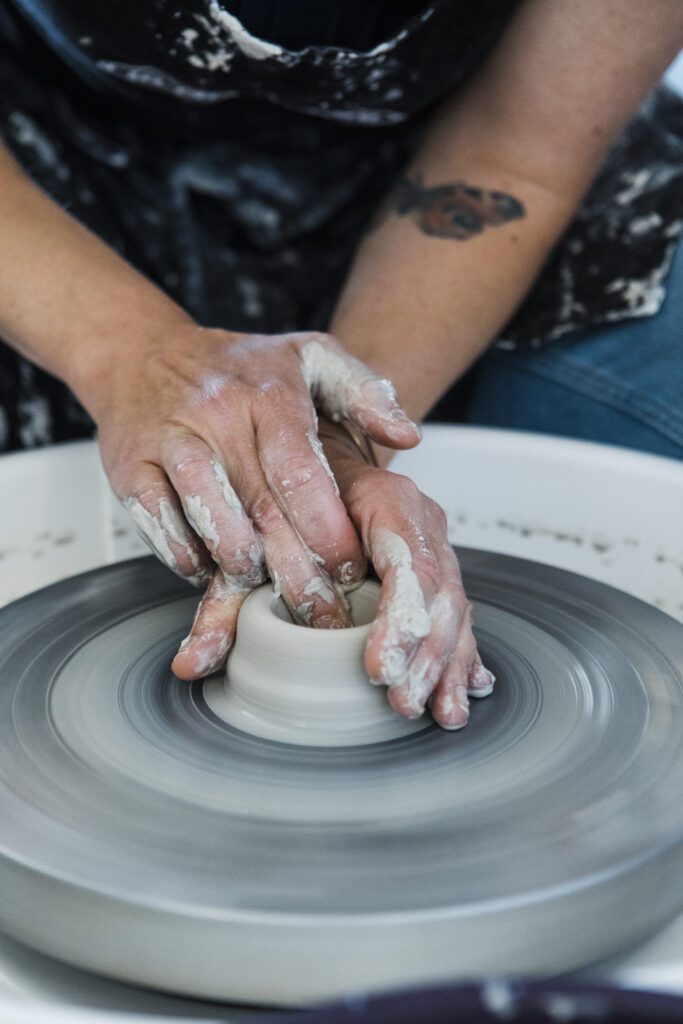
You have been a competitor and after an international judge. What has changed over the years on the piste and behind the scenes at these competitions?
“I was a competitor in 2002 and since 2003 I started judging in German-speaking countries. And then, as next step, because I’m someone very curious and looking for improvements, I got certified as a international judge in 2010.
After that, I became a WBC representative. I can’t say which side of the competition table is more or less stressful but at the same time as a judge you have the chance to meet people from different countries and try many high-end coffees, which I would not be able to try on the daily basis. Definitely, as you know many things changed regarding coffee and coffee used in competitions.
On one hand, I feel there is better communication and higher awareness about coffee, and this lead to shifts in processing methods but at the same time also this evolution was also a reaction to the global coffee warming, leading to the genetics of new cultivar.
On the other end, there is also the part of the roasting, extraction, and serving of coffee, which has also been marked by many innovations both technology-wise as well as on the human part of customer service.
Finally, unfortunately another change is that due to the global pandemic there has been less participation on both sides of the presentation table, fewer judges and fewer competitors were able to attend competitions.”
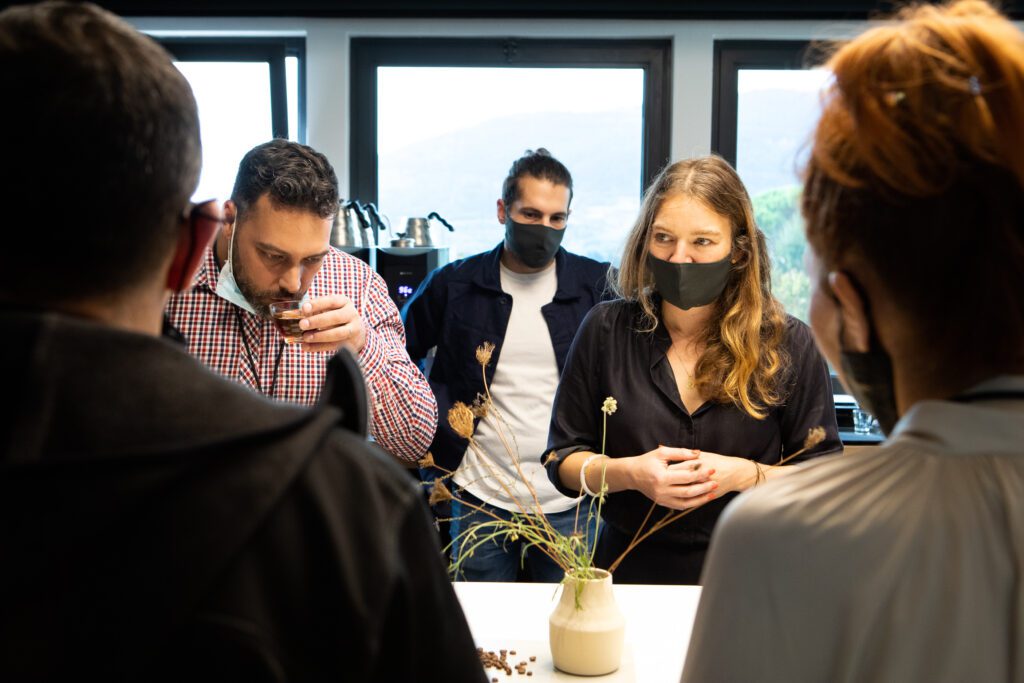
At the Accademia del Caffè Espresso there is also a roasting plant with three roasters: which is your favorite espresso coffee and which is your favorite filter coffee?
“That’s a truly difficult question, because there is simply so much to choose from. I am a person who drinks coffee everywhere, to stay on the ground and understand the reality and also understand better how our visitors use to drink coffee at home or outside.
At work I am fortunate to have the chance to try so many different coffees and as we roast them here in-house. This enables me to learn about how roasting impacts the final taste and flavor profile before coffee gets extracted.
When searching for personal preferences in coffee I rather focus on processing and roasting style. At home I am brewing coffee on a V60 dripper and prefer washed coffees, because I am drinking coffee early in the morning.
During the day then I am drinking whatever is available, not trying to be influenced by information on processing and personal preferences, because in this way coffee can still surprise me and I can learn more about it.
For espresso, I don’t have any preference if blend or single origin, coffee is just way too complex to be able to say that I like this or that more. Espresso is a way of extraction and its quality depends on multiple variables (subjectivity too), and can be as good as the coffee you use in the first place.”
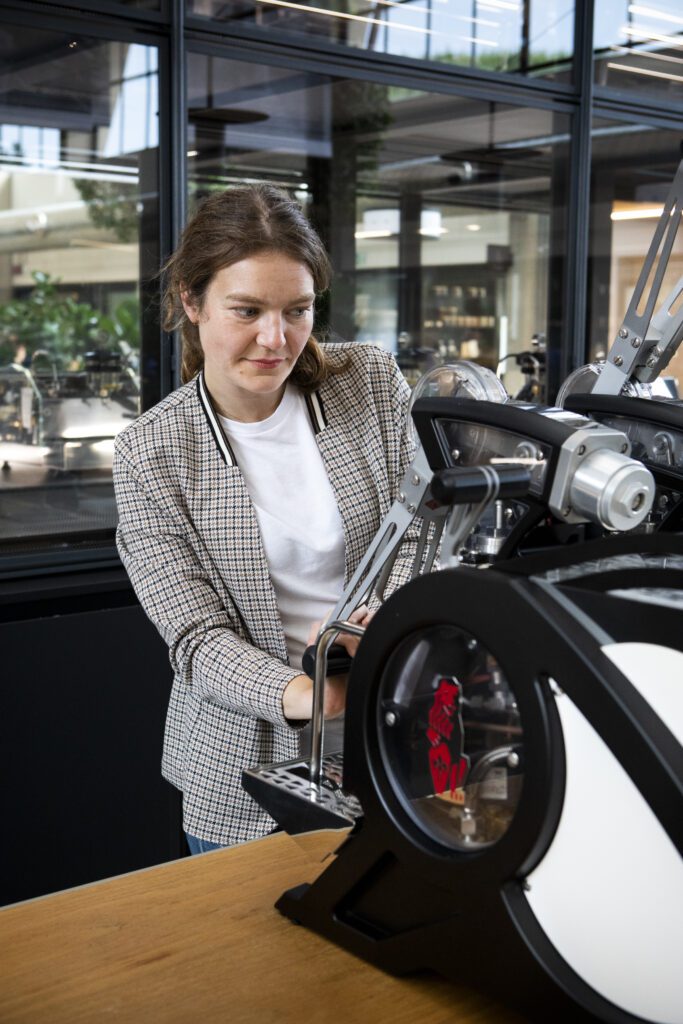
What do you expect from Accademia’s greenhouse coffee harvest?
“Well, we already harvested twice both here in Accademia and also at our factory inScarperia. We practiced harvesting as an education tool, allowing the possibility forvisitors to pick cherries, try how sweet they are and after applying a honey process “casalingo” (domestic) on a self-made processing unit.
Such activity offers us the opportunity to narrow down the distance between coffee origin countries and consumers, while sharing a bit the sensation of being inside a small coffee farm. Obviously, we don’t have the optimal tools for a proper processing of coffee, but we eventually managed to roast and try some of the very small harvest.”
Are you waiting for the flowers this year?
“Well, we are hoping that our coffee plants will continue to flourish as they did until now. We have a very intelligent technology to monitor the temperature, humidity and light situation in the greenhouse, so we obviously hope for both many coffee flowers and consequently many cherries.”
What has it been up to now, and above all what will be its imprint on Accademia?
“For me coming to Accademia del Caffè Espresso was both a very big challenge as well as a very huge change in my personal and professional life. Living in a new country, learning a new language, new culture and tradition and being out of my very own comfort zone.
I also felt very much under pressure with my new role here at Accademia, because I wasn’t sure if I was the right person for this position.
You never know until you try. When I came here during the pandemic, I had the possibility to get used to the new surroundings as well as investing time in learning and education, in talking and getting to know colleagues from other departments, while sharing with them, for example, cuppings and coffee related experiences, which they normally don’t do.
And, of course, we used the time to elaborate our educational offer which we launched when opening Accademia Del Caffè Espresso to the public.
Everyone drinks coffee on a daily base. For many people that’s the driver for the day so they like to take a cup of coffee in the morning to have caffeine and to wake up and to go to work.
Accademia is like an open platform for anyone who is interested in coffee, be it a tourist who is visiting Firenze and wants to explore the history behind a cup of espresso to appreciate Italian lifestyle or a coffee professional who wants to dive deeper into a specific aspect of coffee.
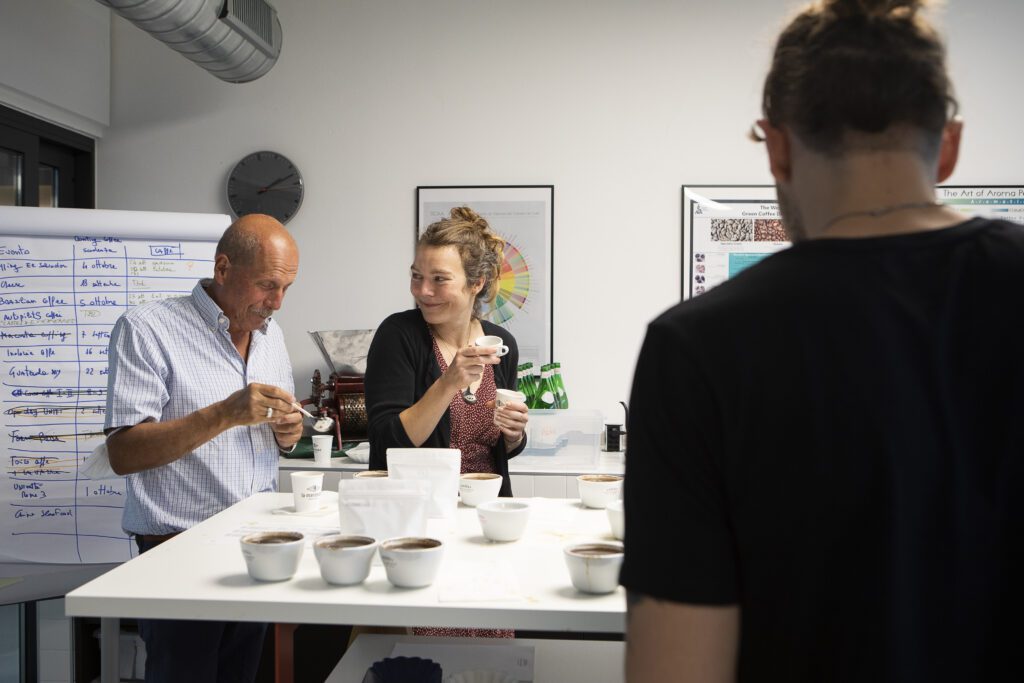
We are learning with every visitor and trying to improve and adapt the content on both trends of the coffee industry as well as the demand of our visitors. This means we curate content and provide education at Accademia Del Caffè Espresso but at the same time we also offer established classes such as those SCA and/or CQI certified.
The formula is to get inspired, create and recreate, as dynamically as the world of coffee is.”



